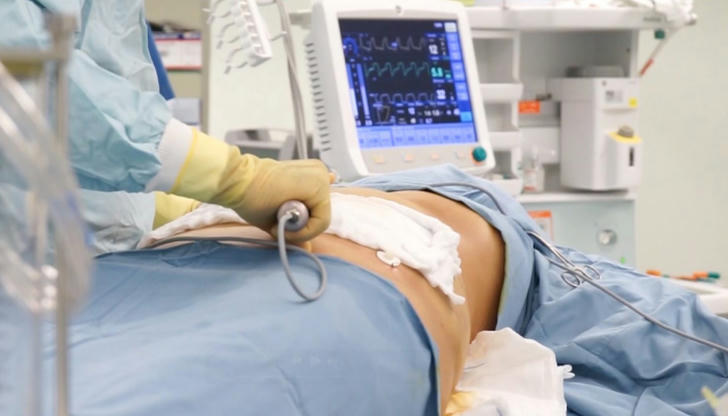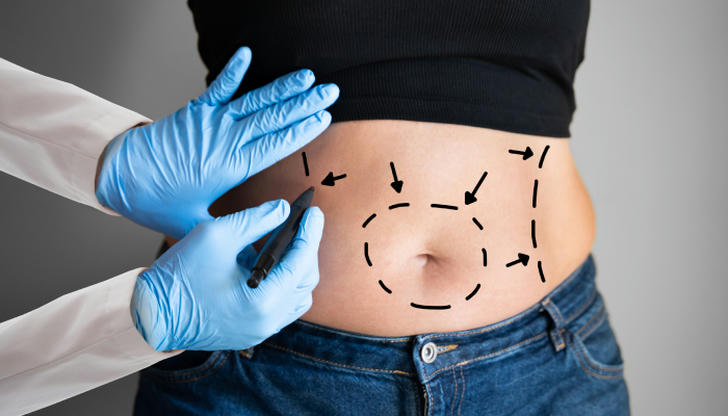Liposuction: A Comprehensive Analysis of Effectiveness, Risks, and Ethical Considerations

Liposuction, also known as lipoplasty, is one of the most popular cosmetic surgical procedures designed to remove excess fat from various areas of the body. Often regarded as a quick fix for those struggling with localized fat deposits that resist traditional weight loss methods like diet and exercise, liposuction has gained widespread acceptance in the world of aesthetic surgery. Over the years, technological advancements have made liposuction a safer, more effective, and less invasive procedure, enabling individuals to contour their bodies with greater precision. However, despite its popularity, liposuction is not without its risks, and it raises important ethical questions. While it can help improve physical appearance and boost self-esteem, the procedure may also lead to complications if not performed correctly. Additionally, concerns about overuse, unrealistic expectations, and body image issues have led to increased scrutiny of the procedure in recent years. This article will explore the effectiveness of liposuction, discuss the risks and potential complications, and delve into the ethical considerations that come with the rise of body contouring surgeries.
Understanding Liposuction
Liposuction is a surgical technique that removes fat from specific areas of the body, such as the abdomen, thighs, hips, arms, back, and chin. The procedure is often used to treat areas that do not respond to diet or exercise, and it is intended for individuals who are generally healthy and within a stable weight range. Unlike bariatric surgery or other weight-loss methods, liposuction is not intended for massive weight reduction, but rather for contouring and shaping the body. The process involves the use of a cannula (a thin, hollow tube) that is inserted into the targeted area through small incisions. The cannula is then used to break up the fat and suction it out using a vacuum or syringe. There are several types of liposuction techniques, each with different mechanisms and benefits: •Tumescent Liposuction: The most common form of liposuction, where a large amount of saline solution with local anesthetic is injected into the target area before fat is suctioned out. This minimizes blood loss and reduces pain. •Ultrasound-Assisted Liposuction (UAL): This technique uses ultrasound energy to liquefy fat before it is suctioned out, making it easier to remove fat from areas like the upper abdomen. •Laser-Assisted Liposuction (SmartLipo): Uses laser energy to melt fat, which is then suctioned out. This technique also stimulates collagen production, which can lead to skin tightening. •Power-Assisted Liposuction (PAL): In this technique, a mechanized cannula is used, making the fat removal process faster and less labor-intensive for the surgeon.
Effectiveness of Liposuction

Liposuction is highly effective at removing localized fat deposits and improving body contour. Many patients experience dramatic improvements in their appearance after the procedure. It is particularly effective in treating areas like the abdomen, thighs, buttocks, and arms, where fat tends to accumulate and is resistant to exercise or dieting. The results of liposuction are generally permanent, as the fat cells removed during the procedure do not regenerate. However, it is important to note that liposuction does not prevent new fat cells from forming. If a patient does not maintain a healthy lifestyle post-surgery, remaining fat cells can still expand, potentially leading to a return of unwanted fat in other areas of the body. While liposuction is effective for body contouring, it is not a weight-loss solution. Most patients who undergo liposuction are already close to their ideal weight, and the procedure is intended to refine areas of the body where fat persists despite exercise and diet. For individuals who are significantly overweight, other procedures such as bariatric surgery or non-invasive treatments like cryolipolysis (fat freezing) may be more appropriate. Moreover, the effectiveness of liposuction can vary depending on individual factors such as skin elasticity, body type, and the skill of the surgeon. Individuals with good skin tone are more likely to experience optimal results, as loose skin may sag if it cannot contract after fat removal.
Risks and Complications

While liposuction is generally considered safe, it does carry risks and potential complications, especially if performed by inexperienced or unqualified surgeons. Some of the most common risks include:
- Infection As with any surgical procedure, infection is a potential risk. The incisions made during liposuction provide an entry point for bacteria, which can lead to infection if not properly managed. Patients are typically prescribed antibiotics before and after surgery to reduce the risk of infection.
- Blood Clots and Embolism Blood clots are a serious complication that can occur after liposuction, particularly when large amounts of fat are removed. In some cases, these clots can travel to the lungs, heart, or brain, resulting in life-threatening complications like pulmonary embolism, stroke, or heart attack.
- Numbness or Nerve Injury Temporary or permanent numbness can occur in areas where the cannula is inserted. Nerve injury may also result in loss of sensation or abnormal sensations in the treated areas.
- Fluid Imbalance Liposuction involves the removal of fat and fluids, and large-volume liposuction can lead to fluid imbalances. This can cause symptoms like dehydration, electrolyte disturbances, or shock. Patients are carefully monitored during and after the procedure to manage this risk.
- Scarring Although liposuction involves small incisions, there is still the potential for scarring. The scars are typically small and located in discreet areas, but the extent of scarring can vary depending on the patient's skin type and how well the incisions heal.
- Uneven Results or Contour Irregularities One of the most common issues patients face after liposuction is uneven fat removal. This can result in lumps, bumps, or dents in the treated area. In some cases, the skin may not retract properly, leading to sagging or asymmetry. While such issues can often be corrected with additional procedures, they can be distressing for patients.
- Anesthesia Risks Liposuction is typically performed under general anesthesia, which carries inherent risks, particularly for individuals with underlying health issues. Anesthesia-related complications, while rare, can include respiratory issues, allergic reactions, and cardiac events.
Ethical Considerations in Liposuction
While liposuction is widely accepted in modern cosmetic surgery, it raises several ethical issues that are important to consider.
- Body Image and Psychological Impact Liposuction can significantly alter a person’s appearance, which may improve self-esteem and confidence in the short term. However, it does not address the underlying psychological factors that contribute to negative body image. In some cases, patients may develop body dysmorphic disorder (BDD), a condition where an individual has an unrealistic perception of their body and may continually seek cosmetic procedures to "fix" perceived flaws. Ethical concerns arise when surgeons perform liposuction on patients who may not have realistic expectations or those who may be seeking the procedure for emotional reasons rather than physical ones.
- Overuse and Unrealistic Expectations With the increasing availability of liposuction and its promotion in the media, there is a growing trend for individuals to undergo the procedure as a quick fix for weight issues. This has led to the overuse of liposuction in some cases, especially among those who do not meet the medical criteria for surgery. When performed on patients who are not suitable candidates, liposuction can result in unsatisfactory results and health risks. Surgeons have an ethical obligation to ensure that patients are well-informed and have realistic expectations about the procedure’s outcomes. Liposuction should not be seen as a substitute for a healthy lifestyle, and patients should be counseled on maintaining long-term weight management practices.
- Accessibility and Socioeconomic Considerations Liposuction is a cosmetic procedure that often comes with a significant price tag, making it accessible primarily to wealthier individuals. This raises questions about equity and the availability of such procedures to those who may benefit from them. Additionally, liposuction is sometimes marketed in ways that encourage social pressure to conform to certain beauty standards, exacerbating feelings of inadequacy or desire for perfection.
The Future of Liposuction

As technology advances, the field of liposuction is continually evolving. New techniques, such as non-invasive fat removal procedures, are gaining popularity as alternatives to traditional liposuction. These treatments, such as cryolipolysis (CoolSculpting), radiofrequency lipolysis (Vanquish), and ultrasound therapy, offer patients the ability to reduce localized fat without the need for surgery. While these procedures are generally less invasive and carry fewer risks, they may require multiple sessions to achieve the desired results. In addition, advancements in laser technology and fat-melting agents may offer even more precise and effective methods of fat removal with quicker recovery times and fewer side effects. The development of these newer technologies suggests that liposuction may eventually become less invasive, safer, and more accessible to a wider range of people.
